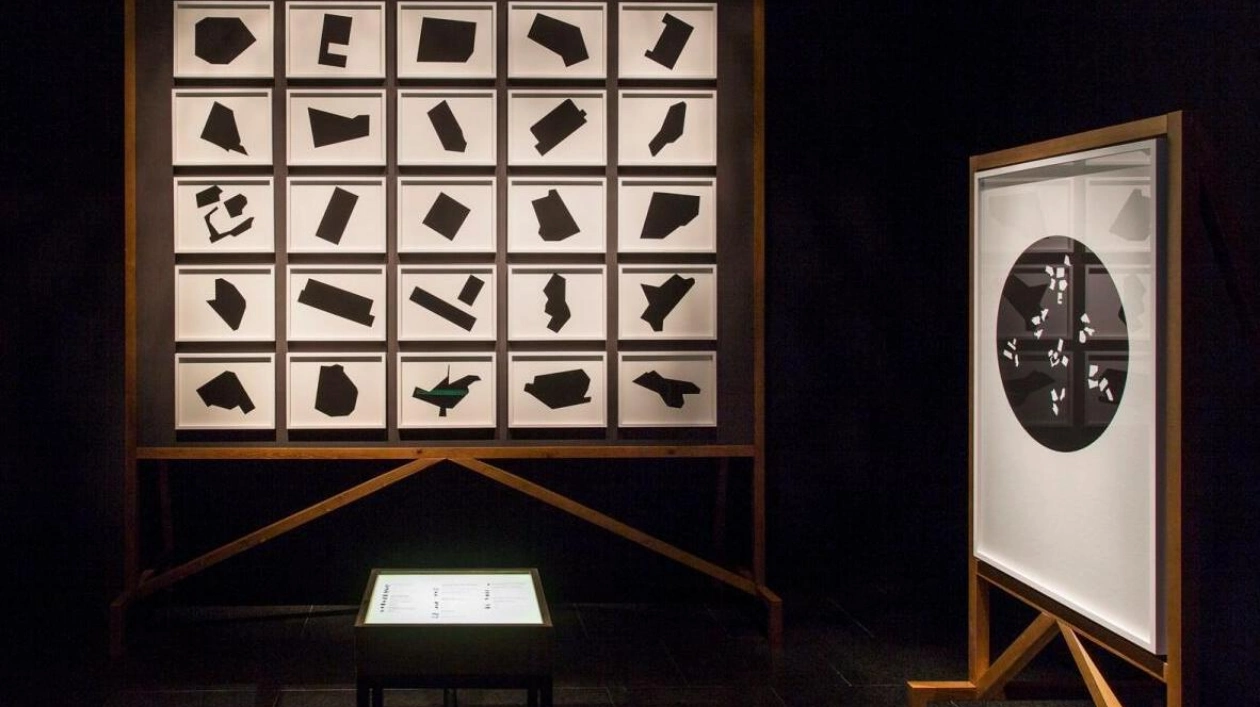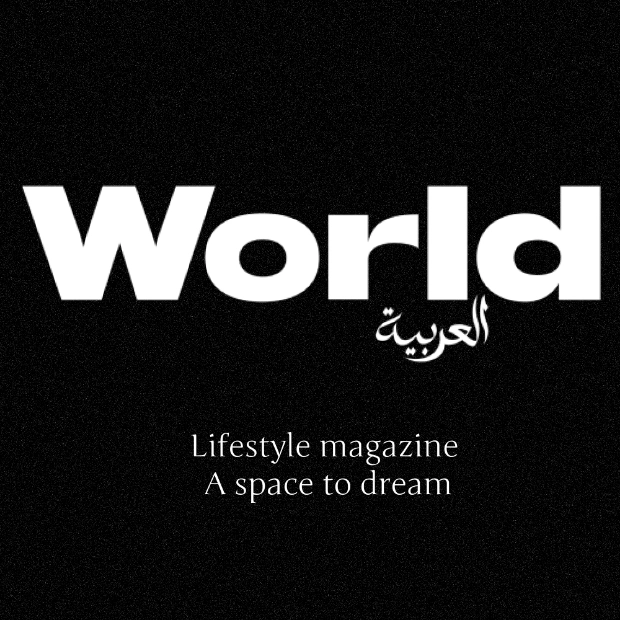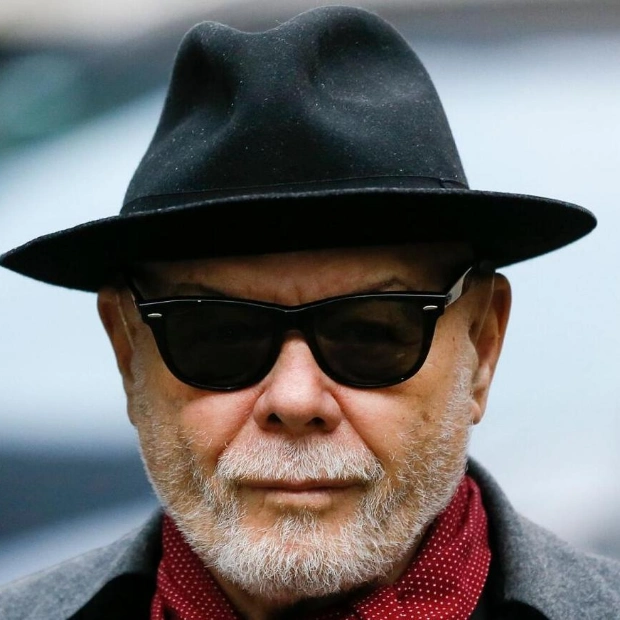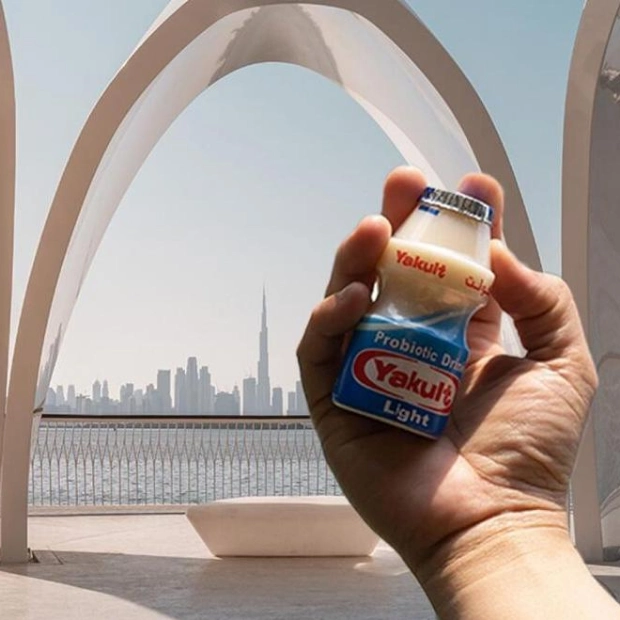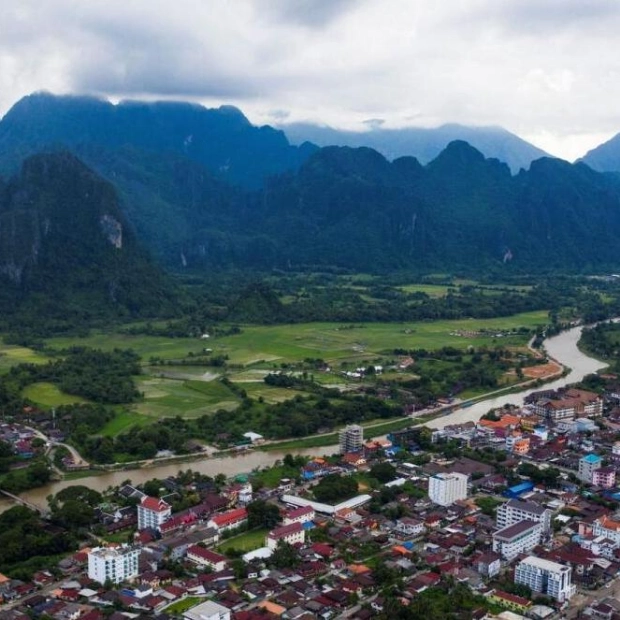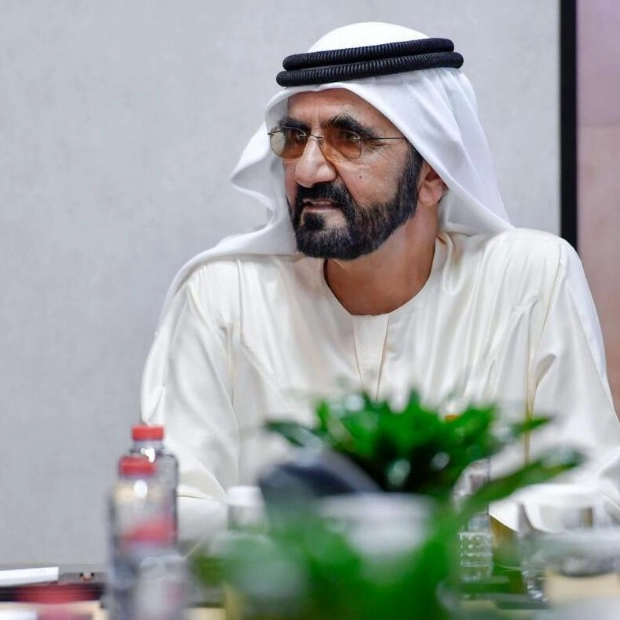In the tranquil setting of the Sharjah Art Foundation’s galleries, located at the historic Al Mureijah Square, Bouchra Khalili’s artworks quietly narrate tales of marginalized identities, civil liberties, stateless communities, the plight of migrants, and what the artist terms “radical citizenship.” Based in Vienna, Khalili is of Moroccan-French heritage, and her solo exhibition, Between Circles and Constellations, is a highlight of the Sharjah Art Foundation’s dynamic autumn schedule, which also features an exhibition dedicated to Emily Karaka, a prominent figure in New Zealand’s post-modern expressionism movement.
Inaugurated by Sheikh Sultan Bin Mohammed Al Qasimi, a member of the Federal Supreme Council and Ruler of Sharjah, these two significant exhibitions pave the way for future showcases featuring renowned artists such as William Kentridge and Antonio Dias. Curated by Hoor Al Qasimi, the director and president of the Sharjah Art Foundation, along with Amal Al Ali and Meera Madhu, Between Circles and Constellations presents a comprehensive overview of Khalili’s most impactful projects from the past two decades, including the regional debut of her recent film The Public Storyteller (2024). One of the exhibition’s standout pieces is The Circle, a mixed media installation that begins with the forgotten story of Djellali Kamal, an undocumented Maghrebi worker who ran for the French presidency in 1974.
“The piece is a reflection through oral poetry, film, and performance on the concept of belonging and community, inviting viewers to envision a world where an anonymous, undocumented worker can be elected president,” explains Khalili, hoping that the artwork will inspire an emancipatory vision of community through poetic gestures. While The Public Storyteller reimagines Djellali’s campaign as an epic Moroccan tale, the ‘Circles’ in the exhibition’s title refer to al halqa, a traditional Moroccan storytelling practice where generations gather in a circle to share memories and political ideas. In Khalili’s interpretation, the circle formed by the audience “becomes a metaphor for the community united by the act of imagining a better future in a shared world,” says Hoor, who was recently appointed the artistic director of the 25th Biennale of Sydney, scheduled for 2026.
Between Circles and Constellations serves as a poignant reminder to document and honor stories of collective emancipation and healing. However, Khalili, whose video projections The Mapping Journey Project garnered widespread acclaim at the Venice Biennale 2024, avoids interpreting her work solely as a commentary on migration or colonial and post-colonial narratives. “In fact, all my works are interconnected by the fundamental question that has guided my practice from the start—how can we rethink forms of belonging that are free from restrictive identity constructs?” says Khalili, who is no stranger to Sharjah’s artistic scene, having previously exhibited at the Sharjah Biennale 10 in 2011 and Sharjah Biennale 15 in 2023.
“The exceptional programs and the dedicated team at the Sharjah Art Foundation make Sharjah a very special place for me,” says the artist, who has also actively participated in two editions of the March Meeting, an annual artistic convention organized by the Sharjah Art Foundation where global experts engage in meaningful discussions on contemporary art. Meanwhile, the life and work of Emily Karaka, currently 72 and based in Auckland, tell a different but equally powerful story. Her vibrant abstractions delve into the complex legacy of colonialism and its enduring impact on Māori identity and culture. As the first major international exhibition of Karaka’s work, Ka Awatea, A New Dawn offers art enthusiasts much to explore.
The expansive Karaka survey showcases works from public and private collections spanning her five-decade career, including new commissions by the Sharjah Art Foundation. “Her artwork, stylistically diverse, from intense abstract expressionist paintings in vibrant colors to poetic representations of land and people, conveys messages of Māori sovereignty, social justice, environmental care, and love for her family. Born from the politics of colonization, her work is deeply personal, passionate, and rooted in Māori rights related to the Treaty of Waitangi, the founding document of Aotearoa New Zealand,” says Hoor, who co-curated the exhibition with Megan Tamati-Quennell, a co-curator of the upcoming Sharjah Biennial 16.
Tamati-Quennell, of Te Ātiawa, Ngāti Mutunga, Taranaki, Ngāi Tahu, Kāti Mamoe, and Waitaha heritage, notes that Karaka descends from the many Māori tribes of Auckland and the surrounding areas. Born in 1952 in Auckland, Karaka began painting in her early 20s. “Though largely self-taught, she cites several leading New Zealand painters, including the modernist Colin McCahon, as influential in her artistic development. She credits her family, including her grandparents and many tribal leaders, for her political awareness and growth,” says Tamati-Quennell.
The Sharjah Art Foundation, renowned for its world-class curatorial approach, has been instrumental in connecting Arab cultural histories with the global art scene and vice versa, thanks to its dynamic programming since its inception in 2009. Both Between Circles and Constellations and Ka Awatea, A New Dawn highlight the institution’s relentless efforts to bring unique artistic experiences to Sharjah, with a particular focus on serving its local communities and reflecting the Gulf’s rich cultural diversity and history. In addition to fostering connections between the Arab art world and the international community, Hoor has been pivotal in transforming Sharjah into a global art hub, passionately restoring heritage buildings and repurposing them into art and culture centers. The Al Mureijah Square is one such space, transformed by the Sharjah Art Foundation into art spaces, including a film screening venue.
The foundation also manages art hubs in Bait Al Serkal and Al Hamriyah, a coastal haven near Sharjah city. In late September, the institution will host two more stellar shows at these venues. At Al Hamriyah Studios, designed by Emirati architect Khaled Al Najjar, visitors can experience Antonio Dias: The Search for an Open Enigma, an exhibition that explores Dias’ category-defying tendencies through a wide selection of works spanning his artistic journey from the 1960s to the early 2000s. At Bait Al Serkal, A Shadow of a Shadow, the first exhibition dedicated to pioneering South African artist William Kentridge’s theatre practice, promises to bring together performances created by Kentridge from the late 1980s to the present, from his interpretations of King Ubu in Alfred Jarry’s play Ubu Roi (1896) and Mozart’s opera The Magic Flute to his original works like The Head and the Load (2018), which explores Africa and Africans in World War I.
“William Kentridge’s practice encompasses theatrical, musical, and operatic projects with visual components that appear and reappear in different forms. Centered around the human condition, his multifaceted imagery is often intertwined with the social, political, and economic realities of South Africa,” says Tarek Abou El Fetouh, director of the performance department and senior curator at the Sharjah Art Foundation. The title of the exhibition is inspired by a play by 13th-century Arab playwright and puppeteer Ibn Daniyal, who fled Iraq to escape Mongol invasions. El Fetouh adds, “Prompted by the sense that the world was ending, Ibn Daniyal created shadow plays that ridiculed authorities and exposed corrupt social norms, themes that would resurface centuries later in Alfred Jarry’s Ubu Roi and Kentridge’s adaptation of Ubu. While acknowledging Kentridge’s affinity for shadow plays and puppet theatre, A Shadow of a Shadow also honors his incisive political critique of authoritarianism through absurdist satire and theatricality. Together, the works selected for this exhibition reflect the artist’s ongoing critique of social constructs, power structures, and the transformative manifestations of the colonial project.”
Between Circles and Constellations and Ka Awatea, A New Dawn are on view at Al Mureijah Art Spaces, Sharjah until December 1; A Shadow of a Shadow and Antonio Dias: The Search for an Open Enigma will open on September 28.
